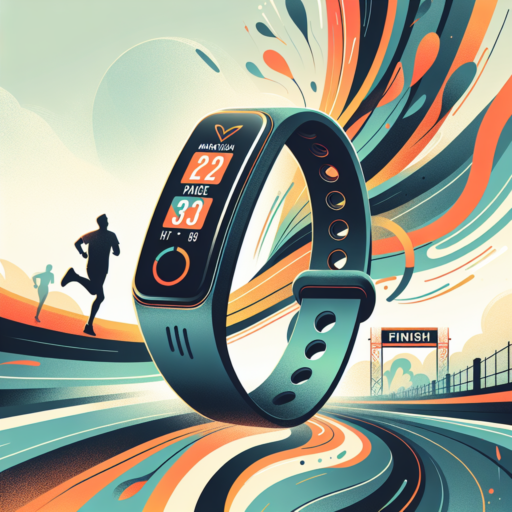How do I find my half marathon pace?
Finding your half marathon pace is crucial for both training and race day. This pace, often different from your short run speed, can help you efficiently manage your energy throughout the 21.1km distance. Understanding and establishing this pace is a cornerstone of effective endurance running.
Start With Your Current Running Speed
Begin by analyzing your current running speed over shorter distances. If you have recent 5K or 10K times, these can offer a solid foundation. A general rule of thumb is to add 20 to 30 seconds to your 10K pace per mile, or adjust similarly for kilometers, to estimate your half marathon speed. This adjustment accounts for the longer distance and the need to conserve energy.
Use a Race Pace Calculator
Several online tools can assist in determining a precise half marathon pace. By inputting your recent race times over different distances, these calculators use established algorithms to predict your half marathon time and pace. This method is especially useful for those with competitive goals or specific finish times in mind.
Consistency in training at your target half marathon pace is key. Incorporating pace-specific runs into your training plan will not only help you become comfortable with the speed but will also set realistic expectations for race day. Remember, every runner’s pace is personal and can vary based on fitness levels, experience, and running conditions.
No se han encontrado productos.
What is the best pacing strategy for a half marathon?
Determining the optimal pacing strategy for a half marathon is crucial for both seasoned runners and newcomers aiming for their personal best. The key is to strike a balance between starting too fast, which might deplete your energy reserves prematurely, and being too cautious, leaving too much in the tank by the end of the race.
Understanding Even Pacing
Even pacing is often heralded as the golden rule for marathon runners. It involves splitting the race into equal segments and running each one at a consistent pace. This approach helps in conserving energy and avoiding the common pitfall of hitting «the wall» too early. By maintaining a steady pace, athletes can better manage their physical and mental resources throughout the race.
Implementing a Negative Split
Another widely advocated strategy is the negative split, where the second half of the race is run faster than the first. This method requires a disciplined start, where runners purposely hold back their pace, preserving energy for a strong finish. The psychological boost of overtaking competitors in the latter stages can also be a significant advantage.
In conclusion, while even pacing is ideal for maintaining energy, incorporating a negative split can offer the advantage of a strong finish. Choosing the best pacing strategy depends on an individual’s running style, training background, and race day conditions. Whichever strategy you lean towards, remember, the best plan is the one tailored personally to you.
How to use pace band?
Using a pace band is an invaluable tool for runners of all levels aiming to hit a specific time goal during a race. To effectively utilize a pace band, start by selecting or creating a band that aligns with your target finish time. This straightforward accessory can be worn on the wrist and functions as a constant, quick reference for your intended pace throughout the race.
Finding the Right Pace Band
Begin with determining the pace per mile or kilometer necessary to achieve your goal time. Numerous online tools can generate a customized pace band based on your inputted finish time and the race distance. It’s important to choose a pace band tailored to the specifics of your race, considering factors like elevation changes and your individual race strategy.
Utilizing the Pace Band During the Race
Once you have your pace band, practice using it during training runs to become accustomed to checking it and adjusting your pace as needed. On race day, your pace band will be your guide, offering reminders of where your pace should be at various points in the race. It’s crucial, however, to remain flexible and adjust your expectations based on how you feel and the race conditions. Relying too heavily on exact paces without taking into account factors like weather or your physical state can affect your performance negatively.
The most effective way to use a pace band is to combine it with your knowledge of your body and your training. Listen to your body’s signals and be prepared to adapt your pace accordingly. A pace band should serve as a tool to help you achieve your goals, not as a rigid plan that disregards the realities of race day. By understanding and respecting this balance, you can use your pace band as a key component of a successful race strategy.
What is a pace bracelet?
A pace bracelet is an innovative tool designed for runners and athletes who are keen on managing their pace throughout a race or a long-distance run. This simple yet effective accessory is worn on the wrist and serves as a constant reminder of the pace one aims to maintain or achieve during their run. Essentially, it acts as a physical guide, helping individuals reach their running goals more efficiently.
The core functionality of a pace bracelet revolves around its design, which typically features a series of splits, or intervals, indicating the target times for specific distances. This allows runners to quickly glance at their wrist to determine if they are on track, ahead, or need to speed up to meet their designated pace. By providing these split times tailored to various distances, such as a marathon or half-marathon, a pace bracelet can be a critical tool in a runner’s arsenal.
These bracelets are not only practical in their application but also highly customizable. Runners can either purchase pre-made pace bracelets that reflect common pacing strategies or have one tailor-made based on their personal pace goals and the specific race they plan to tackle. This customization ensures that the bracelet truly meets the individual needs of the wearer, making it a unique and personalized aid for training and race days alike.




